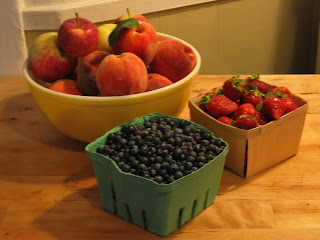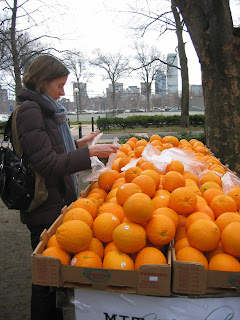
Our family shares a home in Moultonborough, New Hampshire, where Andrew and I were married in 2005. We were pleased to find that Concord (pronounced "concerd" not "con-chord", by the way) grapes grow throughout the property - and at the entrance to our wedding field. My mother and I harvested these for the first time several years ago and made a spectacular jar of Concord grape jelly together. I have since done this on my own, but I was unable to find any grapes this year. Perhaps it was the terrible rainy weather we had, or maybe the animals beat me to it, but I left our anniversary weekend in New Hampshire empty-handed.

My mother, being much more persistent, was able to collect a substantial bag of grapes when she made her visit this October. She has given up on grape jelly, so I am using these grapes to make our winter supply of this treat. We will use it sparingly, but its flavor is so bold and powerful that a little definitely goes a long way. Our technique:
Remove the grapes from the stems and rinse.
Boil the grapes, skins and all, until they are falling apart.
Work the boiled grapes gently through a sieve until the juice stops flowing.
Boil the juice with sugar until it gels (~3/4-1 c. sugar per c. of juice - this sounds like a lot, but the juice is *really* sour).
This "recipe" is suspiciously free of measurements - this is because we have never measured, but have experimented instead. I use the Joy of Cooking guidelines for making jams and jellies. So far I haven't had a disaster...











































